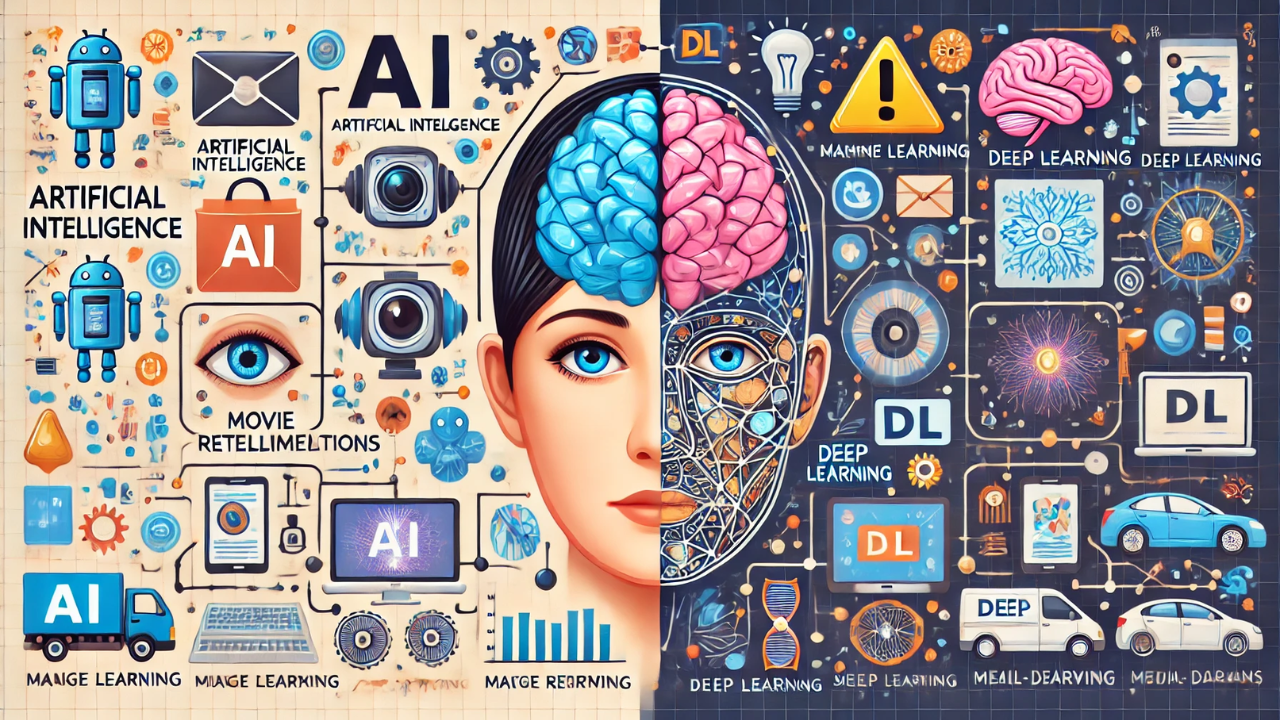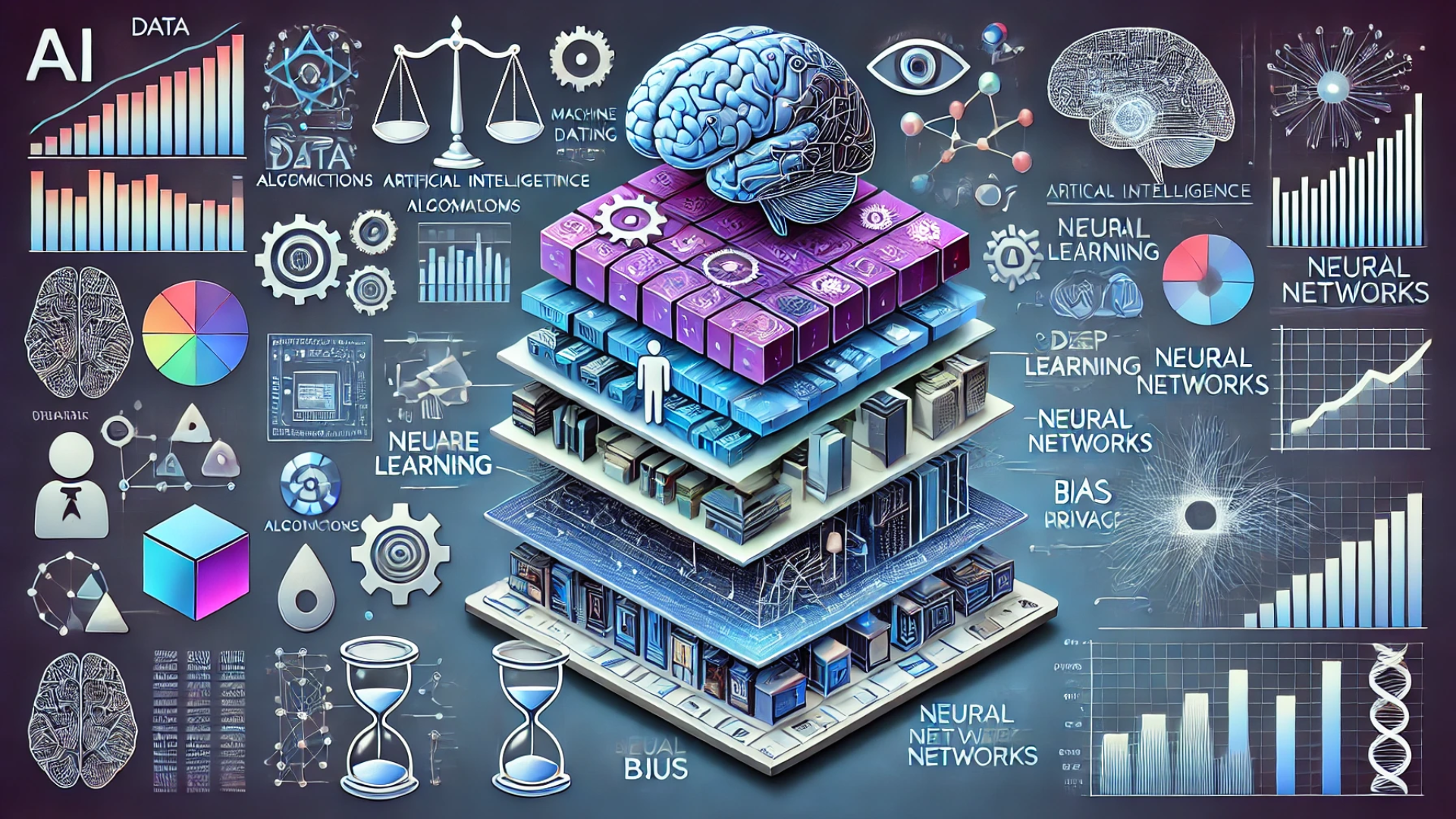
Artificial intelligence (AI) and deep learning (DL) are two buzzwords you’ve probably heard a lot lately. But what exactly are they, and how do they relate to each other? Let’s dive into these fascinating technologies and see how they work together to revolutionize our world.
What is Artificial Intelligence?
Artificial intelligence, or AI, is a branch of computer science that aims to create machines capable of intelligent behavior. This means making machines that can learn, reason, and solve problems like humans do. You interact with AI every day, whether you’re using a virtual assistant like Siri, getting movie recommendations on Netflix, or even when your email filters out spam.
What is Deep Learning?
Deep learning (DL) is a subset of AI. It’s inspired by the way the human brain works and involves creating artificial neural networks. These networks are designed to mimic the way neurons in our brain communicate, enabling machines to recognize patterns, make decisions, and improve over time with more data.
The Relationship Between AI and Deep Learning
Think of AI as the broad concept of machines being able to carry out tasks in a smart way. Now, within AI, there are various approaches to achieve this, and deep learning is one of the most successful methods. In other words, all deep learning is AI, but not all AI is deep learning.
Breaking Down the Connection
Hierarchy of AI:
- AI: The umbrella term encompassing all intelligent machine functions.
- Machine Learning (ML): A subset of AI where machines are trained to learn from data.
- Deep Learning (DL): A specialized subset of ML involving neural networks with many layers.
Neural Networks:
- At the core of deep learning are neural networks. These networks consist of layers of nodes (or neurons) that process data. When you hear about deep learning, it’s these deep (many-layered) networks being referred to.
Data and Training:
- Both AI and DL rely on data, but deep learning requires massive amounts of it. For instance, if you’re training a deep learning model to recognize images of cats, you’d feed it thousands, even millions, of cat images.
Why is Deep Learning Important?
Deep learning has become essential because it excels at tasks where traditional AI methods fall short. Here are a few reasons why DL is crucial:
- High Accuracy: DL models often surpass traditional AI models in accuracy, especially in tasks like image and speech recognition.
- Automation: DL can automate feature extraction, which means it can automatically identify the best features to look at without human intervention.
- Scalability: Given enough data and computational power, DL models can scale to handle very complex tasks.
Real-World Applications of AI and Deep Learning
Healthcare:
- AI and DL are transforming healthcare through applications like medical image analysis, predicting patient outcomes, and even assisting in surgeries.
Automotive:
- Self-driving cars rely heavily on deep learning to process data from sensors and make real-time driving decisions.
Entertainment:
- Streaming services use DL to recommend shows and movies by analyzing viewing patterns.
Finance:
- AI and DL models help in fraud detection, algorithmic trading, and risk management.
Customer Service:
- Virtual assistants and chatbots use deep learning to understand and respond to customer inquiries effectively.
How Do They Work Together?
AI sets the goals and frameworks for intelligent behavior, while deep learning provides the tools to achieve these goals with high precision. For example, AI might aim to build a smart assistant that can understand spoken language, and deep learning provides the means to train the assistant to recognize and interpret speech accurately.
The End of Traditional Coding you need to know
Challenges and Future Prospects
While AI and DL are powerful, they’re not without challenges:
- Data Dependency: Deep learning requires a vast amount of data.
- Computational Resources: Training deep learning models is computationally intensive.
- Interpretability: DL models can be seen as “black boxes,” making it hard to understand how they make decisions.
Despite these challenges, the future of AI and deep learning looks bright. Advances in quantum computing, better algorithms, and more data will likely push the boundaries of what these technologies can achieve.
FAQs
Can AI exist without deep learning?
Yes, AI encompasses many techniques, and deep learning is just one of them. AI can function using other methods like rule-based systems, traditional machine learning, etc.
Is deep learning better than other forms of AI?
It depends on the task. Deep learning excels in tasks with large amounts of data and complex patterns, but other AI techniques might be better suited for different applications.
How long does it take to train a deep learning model?
Training time varies widely based on the complexity of the model, the amount of data, and the computational resources available. It can range from hours to weeks.
Are AI and deep learning safe?
Generally, yes, but like any powerful technology, they need to be used responsibly, with considerations for privacy, ethics, and security.
Wrapping Up
Artificial intelligence and deep learning are interconnected technologies that together drive many of the innovations we see today. While AI provides the overarching goal of creating intelligent machines, deep learning offers powerful tools to achieve those goals with precision and efficiency. As these fields evolve, we can expect even more groundbreaking applications that will shape our future.

